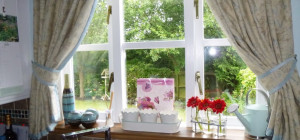Do you want to build a high-performance house? Well, a high-performance house is not complete without a proper air-barrier. An air barrier is a component that works as a system to prevent air flow through the building. You should not mistake air barrier as a vapor barrier. An air barrier is something that can be put both on the interior and exterior of a building. In one word, it is an all-important building material that improves both energy efficiency and building durability.
The process to apply the air-barrier
When it comes to applying the air-barrier to the walls, you need to consist the walls of a 2×4 structural frame, where there will be a half inch plywood, I-joists, one more layer of plywood, a corrugated plastic element and fiber-cement siding. The main air-protection will be at the plywood over the 2×4 structural frames.
As long as durability is concerned, low-quality tape or caulk does not make a good joint agent. However, stapling a barrier over anything appears to be a lot less labor-intensive.
Using a high-quality tape
If you think a tape cannot help you apply an air-barrier to the walls of your house, you are wrong. A good quality tape is always worth in accomplishing your job. At the same time, if you take it from a financial perspective, it is not that expensive. The good-quality tape is still the simplest ‘go for a material' that helps you turn any sheathing material into a perfect air-barrier.
If you work on the quality and longevity of the air-barriers, you will definitely find the best quality material that will offer you better results.
Whereas the good quality tapes are concerned, there are so many brands that produce good quality tapes. However, you cannot use the tapes that are not intended to be utilized as an air barrier element. There is a certain reason why these tapes cannot be used to tape air barriers. Most of these tapes lose their flexibility because of being solvent-based adhesives. And therefore, they fail once the backing materials come off. At the same time, acrylic adhesives also do not make a good quality tape. This is because they do not contain any volatile organic compounds or VOCs. An organic compound is something that volatilizes readily into the atmosphere. And VOCs are an organic material that evaporates and gets involved in the photochemical smog production. This is the reason why they remain evaporable and do not seem to fail in the next twenty years when being used as a tape to attach air barriers.
Therefore, you can expect longevity from this tape. The best part about this tape is that it is simple to apply and cost-efficient.
What to do about the sheathing?
You may ask if sealant can be used to put up an air-barrier? Though sealants fail over time, they can be applied between fastened pieces of plywood to support its durability and prevent it from falling apart.
You may ask when there are no joints in the plywood, what is the need to use the sealant? However, when the joints of plywood butt together on the stud lengthwise, they need to be sealed with adhesive. And there the sealant does the important job. The seal between the plywood and the stud helps prevent air from getting through the exact butt joints of the plywood at that site.
Well, you may face a real challenge if you need to seal the joint perpendicular to the studs. Here, you cannot use tape to seal that joint. You need a small amount of silicon caulk to seal that seam.
Some overall recommendations
- When it comes to applying air barrier, you need to do this mechanically. Seal especially those weak points such as margins and penetrations.
- Place the air barrier on the interior side of your fixed insulation to fortify it for long years to come. If there is steady temperature, no humidity and UV exposure; your air barrier will last longer.
- Place it in such an area where it can be inspected, repaired and replaced easily. This recommendation is for commercial assemblies. Well, in order to protect your establishment against the elements, you need to use liquid sealant.
When you decide to install the air-barrier, you can follow these recommendations for the best results.
Albert Smith is passionate about home renovation, architectural design and gardening. He is a freelance architect and a property management consultant in West Palm Beach, Florida. You can find Albert's articles on many property blogs and article directories. Currently he is writing about sealants and adhesives such as Plasti dip.








